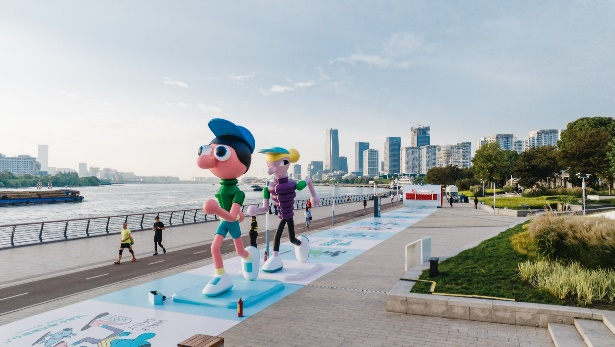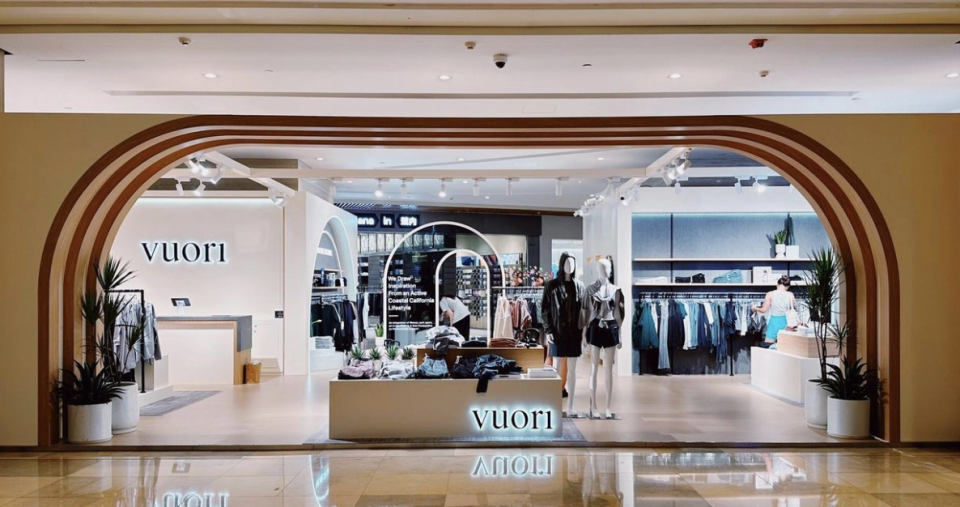China Insight: Health, Well-being Driving Chinese Apparel Demand

Markets worldwide are filled with uncertainty due to the unpredictable and perplexing international dynamics. In this context, happiness, health, and being in shape have become key trends aimed at spurring more apparel purchases in China. This is also in line with the underlying logic of supply and demand — the greater the crisis facing the market, the more brands and consumers need to enhance their competitiveness with the “happiness index.”
In October, a “warm current” rose against the trend in China’s apparel market. Taking the lead, Lululemon set a 3-kilometer-long “corridor for good state and enjoyable exercise” along the river in Xuhui, Shanghai, and launched a weeklong dialogue, with courses and other activities. This was followed by the acquisition of Maia Active (known as the cheaper equivalent of Lululemon) by Anta Group, the market leader in China’s sports category, and the entrance of Vuori (known as the “Lululemon of men’s”) into the Chinese market before the Double 11 shopping festival.
More from WWD
Peloton Still Struggling, but Lululemon Apparel Is Bright Spot
WWD China City Power 2023: The Chinese Fashion Capitals Stepping into the Spotlight
The Chinese market, as Lululemon’s third-largest in the world after the U.S. and Canada, achieved over 60 percent growth in the second quarter of 2023, according to its latest results. Lululemon earlier this fall released its Global Happiness Report 2023, a research report looking at 14 markets around the world. According to the report, the global happiness index in 2023 is 66 points, the same as in previous years, while the happiness index of mainland Chinese residents is 78 points, higher than the global average.
Following Lululemon’s global study on happiness, it’s no coincidence that emerging brands in the yogawear category delivered their performance statistics for the market in October. Sixty-five percent of respondents around the world reported that improving their well-being is one of their priorities, and Chinese consumers are consciously taking action.
Taking yogawear as their entry point, how large of a market can clothing brands build in China?
Lululemon has more than 160 stores in the country, with its largest store in Asia located in Jing’an Kerry Centre, Shanghai. Maia Active has 39 stores in core business districts of China’s first- and second-tier cities. By the end of the year, the number will reach 40 offline stores, as revealed by Maia Active. Vuori, which only expanded outside the U.S. last year, launched its first store in China in the form of a pop-up and will unveil its first official store in March. With the eagerness to tap this huge market, it has opened a flagship on Tmall and had a trial operation for a year prior to that.

A Maia Active store.
Before the emergence of these brands, China’s sportswear market was dominated by Anta and Li Ning, with few brands targeting the yoga apparel subcategory. Later, with the strong rise of Lululemon, Particle Fever, SylphLike Loli, VFU and other brands began to try to capture the remaining market share. The two seemingly young brands, Maia Active and Vuori, are backed by well-established investors. For example, Maia Active had received hundreds of millions of dollars in combined financing from Belle International and Sequoia Capital China before it was acquired by Anta Group, while Vuori received a $400 million investment from Softbank Vision Fund back in 2021.

A Vuori store.
Yet investment in the apparel industry cooled off due to the sluggish consumption, making big bets on health a common choice for investors and consumers alike.
So how large is the yogawear market? According to the 2022 China Fitness Industry Data Report, China’s fitness market in 2022 was worth around 255.9 billion yuan, or $35 billion. A closer look at the consumer market for yogawear and equipment in the fitness track shows that the market size of yoga supplies in China rose from 8.2 billion yuan ($1.12 billion) to 20 billion yuan ($2.74 billion dollar) in 2022, demonstrating a significant year-over-year growth tendency.
As a result, the established sports brands began to leverage yogawear to regain market share in women’s sports clothing, such as Fila, which launched the “Latte Girl” series, focusing on “small waist” yoga pants; high-end outdoor brand Descente, which introduced the synthesis of training pants in the “Dynamic Line Body Flex” series, and Li Ning’s new leggings series of “Knead Flex Pants” and “Sassy Pants” in the original leggings product line.
According to the Global Happiness Report, 67 percent of mainland Chinese respondents are optimistic about the future, compared to the global average of 42 percent. The general happiness index of Mainland residents is higher than the global average. However, there are differences in the level of happiness among different groups, with men and those born after 1995 having relatively lower happiness indices. When the happiness level is low, more than 42 percent of respondents said it would affect their performance in the workplace, 48 percent would feel a lack of connection with the community and 45 percent would procrastinate in fulfilling their personal responsibilities.
These effects are even more pronounced in the post-1995 group, who lack a sense of well-being. As a result, 75 percent of respondents preferred to exercise in a way that made them feel good. Of these respondents, 65 percent believe that community activities are more conducive to their sense of well-being than exercising alone.
In addition, according to the analysis of Anta Sports in this year’s interim report, in terms of the consumption trend, the main consumer group has gradually shifted to the post-’90s and ’95s. The potential of the female market is being realized and the demand for outdoor sports categories is growing rapidly. All these changes in the structure of the consumer population and consumer behavior have a significant impact on the apparel sector. In fact, following Frisbee, camping, hiking and skiing, consumers’ pursuit of a healthy lifestyle is gradually returning to be the focus. Prior to 2023, yoga became a popular choice for consumers pursuing fitness during the COVID-19 pandemic as an indoor exercise. At the beginning of 2023, outdoor sports began to regain their popularity.
All apparel brands are poised for the Double 11 shopping event. Data from the social sharing platform Xiaohongshu show that search for skiing on the platform since September last year increased significantly, while hiking wear related searches ranked first. Multiple trends emerged this year as demand for sports and outdoor surged, with some predicting it will grow 75 percent in 2023.
In sharp contrast to the complex economic situation, the “healing economy” is in full swing. With the increase of people’s pursuit of a healthy lifestyle, and consumption driven by stress reduction and comfort, further growth will be seen in yoga, meditation, Pilates and other healing activities.
The growing yogawear market is just a start, indicating the trends in consumer psychology and as well as in Chinese consumer demand for apparel going forward.
Best of WWD


